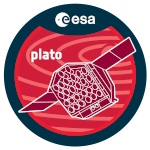With the advent of space-based missions such as CoRoT, Kepler, and TESS, asteroseismology has become a powerful tool to study the internal rotation of stars. The rotation depends on the efficiency of the angular momentum (AM) transport inside the star, and its study allows to constrain the internal AM transport processes, as well as improve our understanding of their physical nature. In this context, we compared the rotation rates predicted by asteroseismology and by starspots measurements for four main-sequence F-type stars from the Kepler LEGACY sample, considering different AM transport prescriptions, and investigated if some of these prescriptions could be ruled out.
Due to the slow rotation of these stars, we decoupled the modelling of the structure and of the rotational profile, respectively obtained by an asteroseismic characterization and by using rotating models including a detailed and coherent treatment of the AM transport. We then compared the mean asteroseismic rotation rate with the surface rotation rate from starspots measurements for each of the AM transport prescriptions. In the hotter part of the HR diagram (M_star > ~ 1.2M_sun at solar metallicity), combining asteroseismic constraints from splittings of pressure modes and surface rotation rates does not allow to conclude on the need for an efficient AM transport in addition to the sole transport by meridional circulation and shear instability. Both prescriptions are indeed consistent with the quasi-solid rotation measured by Benomar et al. (2015) and Nielsen et al. (2017). In the colder part of the HR diagram, the situation is different due to the efficient braking of the stellar surface by magnetised winds. We find a clear disagreement between the rotational properties of models including only hydrodynamic processes and asteroseismic constraints, while models with magnetic fields correctly reproduce the observations, similarly to the solar case.
This shows the existence of a mass regime corresponding to main-sequence F-type stars for which it is difficult to constrain the AM transport processes, unlike for hotter, Gamma Dor stars or colder, less massive solar analogs.

 PDF version
PDF version
